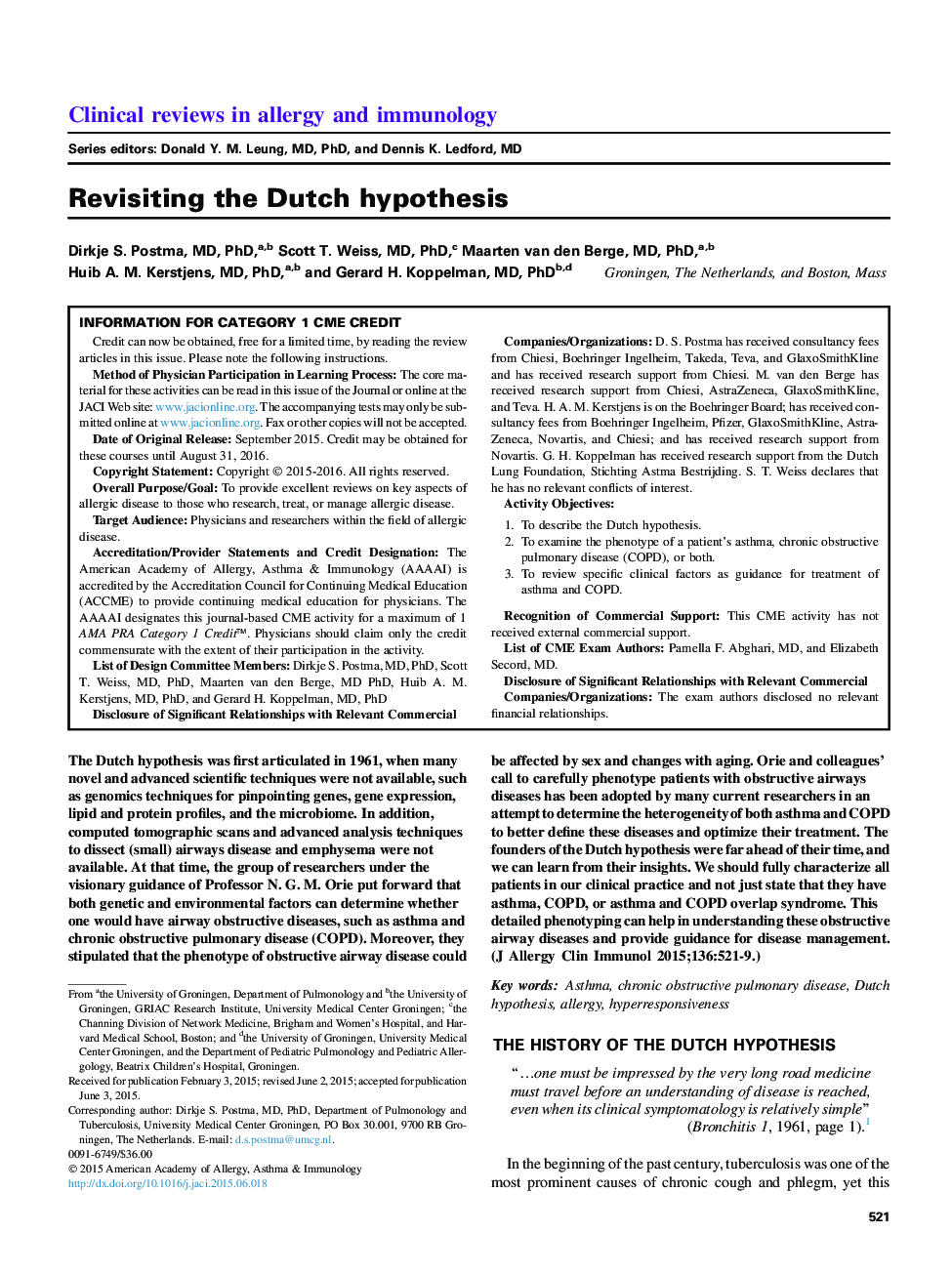| کد مقاله | کد نشریه | سال انتشار | مقاله انگلیسی | نسخه تمام متن |
|---|---|---|---|---|
| 6064500 | 1201862 | 2015 | 9 صفحه PDF | دانلود رایگان |
عنوان انگلیسی مقاله ISI
Revisiting the Dutch hypothesis
ترجمه فارسی عنوان
بازبینی فرضیه هلندی
دانلود مقاله + سفارش ترجمه
دانلود مقاله ISI انگلیسی
رایگان برای ایرانیان
کلمات کلیدی
ACoSBHRICSRCTRandomized controlled trial - آزمایش تصادفی کنترل شدهAsthma - آسمAllergy - آلِرژیCOPD - بیماری مزمن انسدادی ریهChronic obstructive pulmonary disease - بیماری مزمن انسدادی ریهcomputed tomography - توموگرافی کامپیوتری یا سی تی اسکن یا مقطعنگاری رایانهایGenome-wide association study - مطالعه مرتبط با ژنومGWAS - مطالعهٔ همخوانی سراسر ژنومBronchial Hyperresponsiveness - پاسخگویی برونی مزمنHyperresponsiveness - پاسخگویی بیش از حدSingle nucleotide polymorphism - پلیمورفیسم تک نوکلئوتیدیSNP - چندریختی تک-نوکلئوتیدInhaled corticosteroid - کورتیکواستروئیدهای استنشاقی
موضوعات مرتبط
علوم زیستی و بیوفناوری
ایمنی شناسی و میکروب شناسی
ایمونولوژی
چکیده انگلیسی
The Dutch hypothesis was first articulated in 1961, when many novel and advanced scientific techniques were not available, such as genomics techniques for pinpointing genes, gene expression, lipid and protein profiles, and the microbiome. In addition, computed tomographic scans and advanced analysis techniques to dissect (small) airways disease and emphysema were not available. At that time, the group of researchers under the visionary guidance of Professor N. G. M. Orie put forward that both genetic and environmental factors can determine whether one would have airway obstructive diseases, such as asthma and chronic obstructive pulmonary disease (COPD). Moreover, they stipulated that the phenotype of obstructive airway disease could be affected by sex and changes with aging. Orie and colleagues' call to carefully phenotype patients with obstructive airways diseases has been adopted by many current researchers in an attempt to determine the heterogeneity of both asthma and COPD to better define these diseases and optimize their treatment. The founders of the Dutch hypothesis were far ahead of their time, and we can learn from their insights. We should fully characterize all patients in our clinical practice and not just state that they have asthma, COPD, or asthma and COPD overlap syndrome. This detailed phenotyping can help in understanding these obstructive airway diseases and provide guidance for disease management.
ناشر
Database: Elsevier - ScienceDirect (ساینس دایرکت)
Journal: Journal of Allergy and Clinical Immunology - Volume 136, Issue 3, September 2015, Pages 521-529
Journal: Journal of Allergy and Clinical Immunology - Volume 136, Issue 3, September 2015, Pages 521-529
نویسندگان
Dirkje S. MD, PhD, Scott T. MD, PhD, Maarten MD, PhD, Huib A.M. MD, PhD, Gerard H. MD, PhD,
